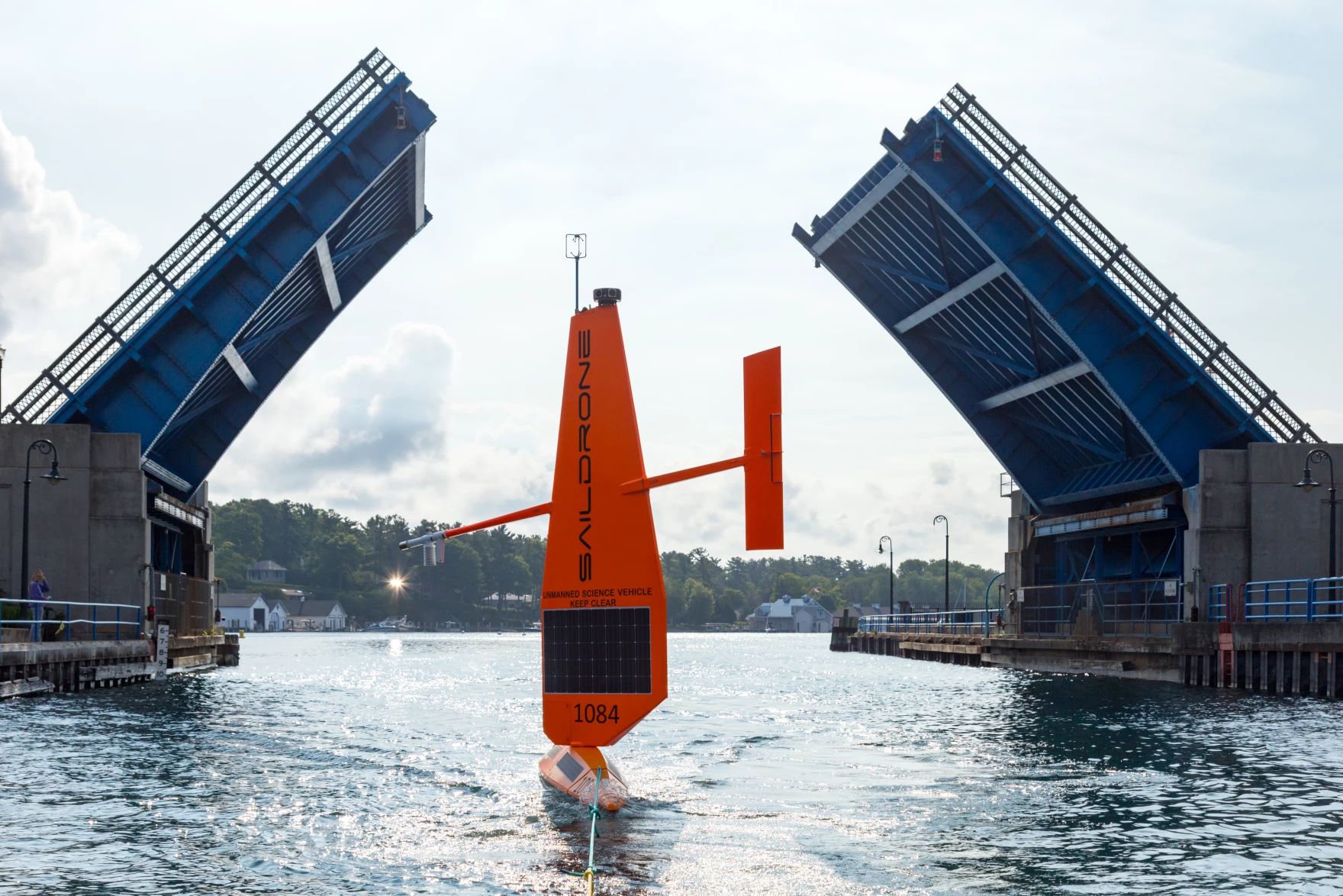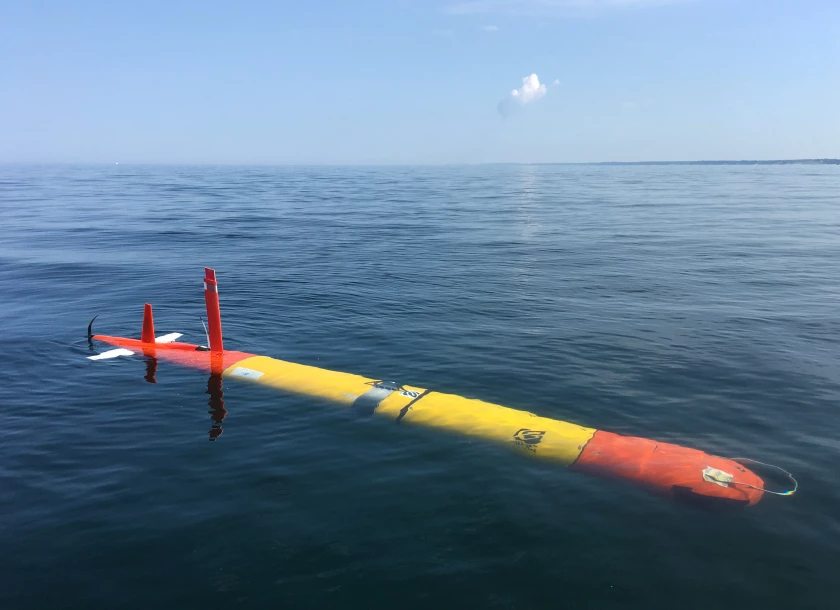
By Lester Graham, Michigan Radio
The Great Lakes News Collaborative includes Bridge Michigan; Circle of Blue; Great Lakes Now at Detroit Public Television; and Michigan Radio, Michigan’s NPR News Leader; who work together to bring audiences news and information about the impact of climate change, pollution, and aging infrastructure on the Great Lakes and drinking water. This independent journalism is supported by the Charles Stewart Mott Foundation. Find all the work HERE.
The government is using three uncrewed research vessels in the Great Lakes.
These autonomous vessels are gathering data on fish. One vehicle is on the surface on northern Lake Michigan. Another is on Lake Erie.
There’s also a long-range autonomous underwater vehicle (LRAUV) that’s mapping fish distribution. It’s being deployed out of harbors from Frankfort down to Benton Harbor.

A long-range autonomous underwater vehicle (LRAUV) is mapping fish populations in Lake Michigan. (Photo courtesy of Peter Esselman/USGS)
The U.S. Geological Survey along with conservation agencies from Michigan, Wisconsin, and Ontario are partners in these experimental uses of the uncrewed vessels.
The USGS said in a release that diesel-powered conventional research vessels are relatively loud and that might have an impact on the data collected because fish could be scared away by the noise.
The surface vehicles, called saildrones, are wind-powered and can stay out on the water 24 hours a day for months, gathering data.
Having more data always makes scientists happy. It can be used to determine the validity of other research where data was gathered by crews on conventional boats.
The operators say notices about the autonomous vessels have been sent to the U.S. Coast Guard to provide to mariners.
Catch more news at Great Lakes Now:
Mapping the Great Lakes: Freighters!
Eat Your Heartland Out: How to Feed A Great Lakes Freighter Crew
Featured image: A saildrone in Charlevoix headed out to northern Lake Michigan. (Photo courtesy of USGS)




